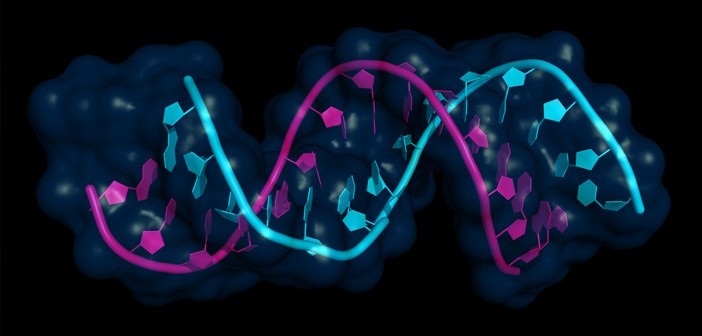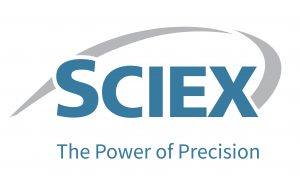Webinar Q&A follow up – Oligonucleotide Quantitation and Characterization by High Resolution LC–MS

Thank you everyone who attended our live webinar in association with SCIEX. Below are some responses to the questions posed during the live event. We hope this is a useful resource and thank our webinar attendees as well as our speaker, Lin-Zhi Chen (Boehringer Ingelheim Pharmaceuticals; CT, USA), for his time.
Q) Does ion-pair dirty MS quickly? How often do you need to clean the ion source?
A) High molar ratios of ion-pairing reagent have the potential to dirty MS systems quickly. Ion source designs make a big difference here. The orthogonal spray, actively vented source and ion optics (rather than an ion transfer tube) of SCIEX systems make them much less susceptible to ion-pairing reagent contamination.
Q) How stable are oligo signals in MS? Do you need to tune MS more often?
A) Very stable. Don’t tune MS that often but do need clean ion source more frequently.
Q) Triple quadrupole vs qTOF for MRM-based quantitation, which one is more sensitive?
A) Have not compared the two directly.
Q) Can you sum all ion charge states of an oligo analyte for quantitation?
A)Yes! Make sure no interferences for each charge state.
Q) Can you use columns other than reverse phase for LC–MS analysis of oligos?
A) Anion exchange column with pH gradient would be next to try.
Q) Add organic solvent in recon not enough to break duplex?
A) We didn’t observe breakdown of double helix in the presence of 15% ACN.
Q) How do you choose your ion-pairing reagents? Do you change ion-pairing reagents significantly from oligo to oligo?
A) Details how ion-pairing reagents selection and optimization can be found at: Journal of Pharmaceutical and Biomedical Analysis 138 (2017) 146–152.
Q) Why do you think the dynamic range was narrower for the MRM vs HRMS methods?
A) Have not fully investigated. But most likely due to collision for that particular MRM pair.
Q) For the HRMS you didn’t use any fragmentation?
A) I did not for these studies, but you definitely can. You can use either specified precursor ion fragmentation or SWATH. In the MRM mode, we use HR for fragments.
Q) Can Dr Chen re-explain the IP-HPLC conditions for analyzing OGN?
A)There is a good review paper on this topic. Journal of Pharmaceutical and Biomedical Analysis 138 (2017) 146–152.
Q) r=0.9945 gives r2=0.989, any comments?
A) >0.98 is acceptable.
Q) Can HRMS identify and characterize long term oligo repeats in disease states like Huntingtons’s (e.g., 36 or more CAG trinucleotide repeats)?
A) That is technically possible, but has not been tested.
Q) What software is used for characterization of oligonucleotide?
A) SCIEX software. SCIEX data can also be analyzed in ProMass.
Q) Can the speaker review the slide 21 again for IP-HPLC conditions?
A)Please see this article for more details. Journal of Pharmaceutical and Biomedical Analysis 138 (2017) 146–152.
Q) Do you have software to help metabolite ID?
A) Yes! For both Met ID and MS/MS fragmentation.
Q) Due to non-specific bindings, do you encounter reproducibility issues?
A) This was addressed in the live portion.
Q) Have you compared sensitivity between triple TOF 5600 and 6600?
A) Yes in 2 different labs. 6600 is better than 5600.
Q) Adduct formation mostly from HPLC system and mobile phase? Does MS need to be cleaned before running oligo samples
A) This was addressed in the live portion.
Q) If MS response depends on the number of phosphate groups, how can you use then UD response for quantitation of truncated metabolites that have less phosphate groups?
A) This was addressed in the live portion.
Q) Any comparison to other platforms for sensitivity and quantitation like the Orbitrap?
A) Myself, not yet. But Orbitrap has been reported for oligo analysis.
Q) What is guide strand and passenger strand?
A) For siRNA, guide strand is the active strand which binds to target mRNA, whereas passenger strain is not active and doesn’t interact with target mRNA.
Q) Have you tried HILIC column for this analysis?
A) This was addressed in the live portion.
Q) Can you comment on concentrations of HFIP and DIPA you use. Need for optimization for different oligonucleotides?
A) This was addressed in the live portion. Also see a very good paper for more details: Journal of Pharmaceutical and Biomedical Analysis 138 (2017) 146–152.
Q) What kind of containers can be used to store and prepare plasma samples?
A) We normally store plasma’s in freezers -20 or -70 in polypropylene.
Q) How do you produce higher charge state?
A) Charge state is usually a function of the length of the oligo. The longer the oligo, the higher the likelihood of getting another negative charge due to a phosphate group. However, charge state distributions can be tuned slightly with source voltages. Also, different ion sources will give different charge state distribution.
Q) Is it necessary to prepare mobile phase fresh every day?
A) Yes in our case. It is generally recommended to make fresh mobile phase every day.
Q) Do you think that SFC (UPC2 with CO2) can be a nice alternative to avoid adducts prior to MS analysis?
A) Good idea! I am not aware of that anyone has tried that.
To access the full on demand webinar and Q&A session, click here.

